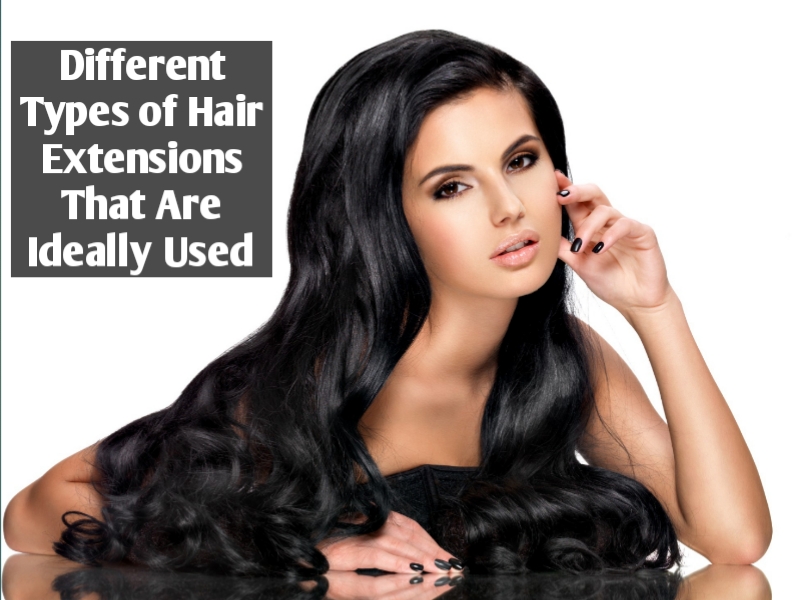Sometimes, we are fed up with his fluffy hair, or we find that they do not grow fast enough! In these cases (and more), hair extensions can be a solution.
When you have decided to take the plunge and get the mane of your dreams, a minimum of questioning is needed to choose the right type of extension.
Quality of the extension, price, type of installation, duration: let’s go around the subject to help you see more clearly!
Different Types of Hair Extensions
- Natural Hair Extensions- This is the first question to ask! Natural extensions are made with human hair. It’s easy to take care of because it’s real hair: wash and brush as usual.
We can even color them, straighten them or curl them!
The other undeniable advantage is that they offer a very natural result and blend easily with the rest of the hair.
Their lifespan is important: natural extensions are the ones that last the longest. Obviously, all of this comes at a cost, and human hair extensions are by far the most expensive. The price depends on length and weight.
2. Synthetic extensions
These extensions are made with synthetic fibers. The advantages of synthetic extensions are numerous. The first is the excellent hold of this artificial hair.
You can sleep on your curls or walk in the rain with your hair straightener: the extensions keep their shape, and the hairstyle remains intact. No need for brushing; natural air drying is enough.
Another good point: the color does not fade and retains its beautiful shine. Finally, this type of extension is much less expensive than natural hair.
On the downside, of course, even if the look and feel of the synthetic fiber are similar to real hair, the result is not as natural.
Synthetic hair requires special maintenance, and appropriate products must be used. They also tend to tangle more easily, hence the need to brush them more frequently and longer with great gentleness. They can be stored for 3 to 6 months, depending on the quality of the fiber.
3. Clip-in extensions
The clip-in extension comes in the form of a band with mini clips that are attached to the hairline. This is the best type of extension if you want to give it a try. Indeed, they can be put on and taken off very easily and quickly, even alone at home.
With them, you can wear longer hair just for an evening! The concern with clips is that they are often uncomfortable; they risk, for example, being troublesome for sleeping.
Another recurring problem is that knots tend to form at the level of the attachment, so they must be brushed often.
If clip-in extensions can be washed with shampoo, they are less resistant to conditioners and masks that make them slip due to the presence of greasy substances. Finally, they are more conspicuous than other types of extensions.
4. Ring extensions
Here, it is a question of attaching the addition to the lock of natural hair with the help of a small metal or silicone ring.
This type of extension is recommended for fine hair and those who are fragile. The advantage of this technique is that nothing is stuck on the hair and that you can therefore remove the extension quite easily. As the extension has not been glued, we can also consider reusing it!
Although the rings are colored the same as the hair, they are sometimes a bit more noticeable. The hold is sometimes less important, but the hairdresser can wind up the rings every two months.
5. Adhesive extensions
Here, extension wicks are pre-glued on an adhesive strip: all you have to do is stick them to the scalp.
It is a good option when you have fine hair. In terms of visibility, adhesive extensions often go unnoticed.
In terms of exposure time, this technique is one of the fastest (the removal is also) and counts only one hour, which also makes it one of the cheapest.
These hair extensions last a maximum of 3 months or even less if you have oily hair. Indeed, they are criticized for slipping (which is also accentuated if you use a lot of care and/or styling products that grease the hair).

